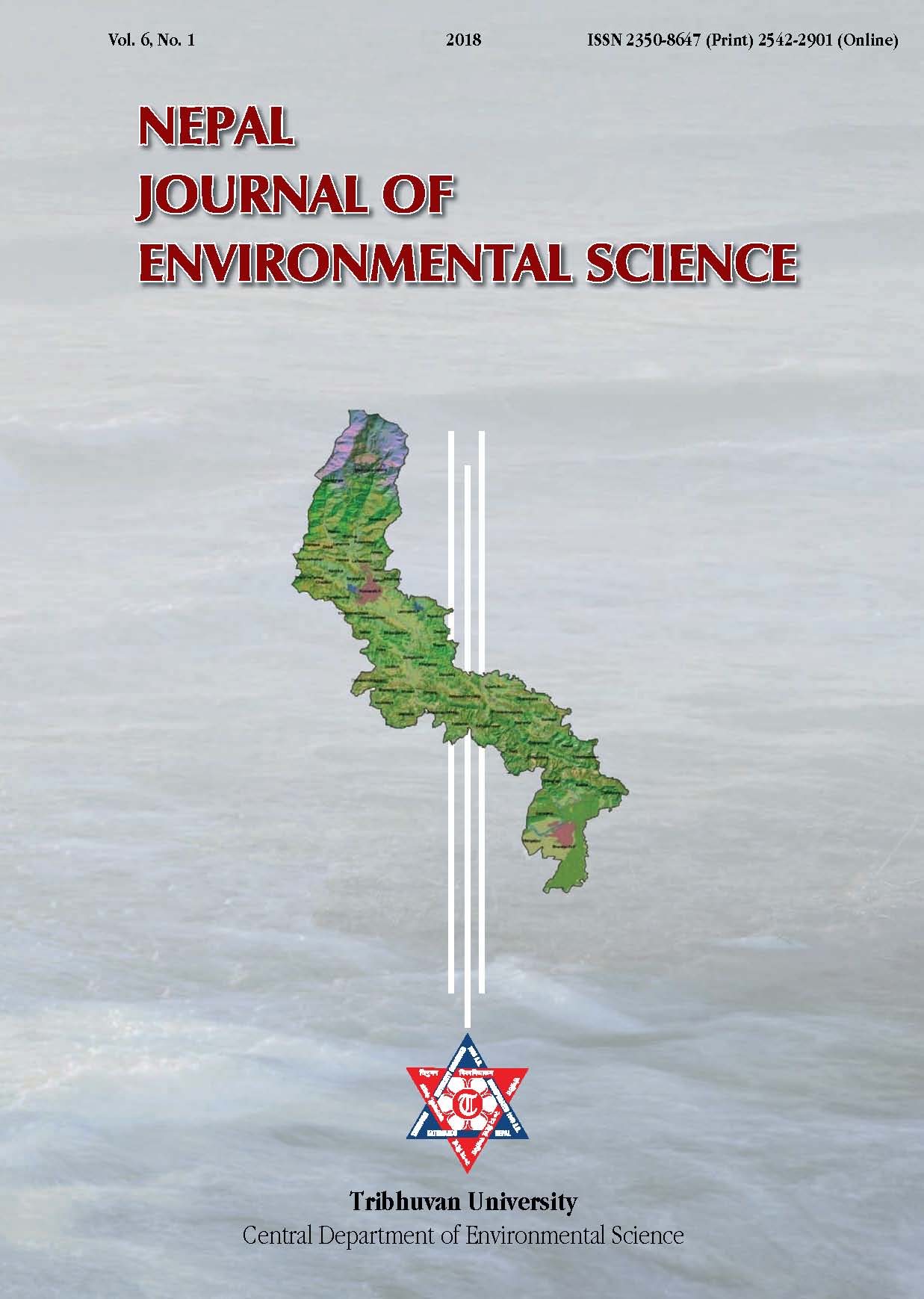Willingness to pay for conservation of wetland ecosystem: Case of Mudun Ela and Kalu Oya Watersheds of Western Province, Sri Lanka
DOI:
https://doi.org/10.3126/njes.v6i0.30125Keywords:
Contingent valuation method, Economic valuation, Tobit model, Wetlands, Willingness to payAbstract
The wetland ecosystem provides a number of social and economic benefits for people. This importance is often neglected or undervalued and therefore wetlands are in a serious risk today. Specially, in relation to human activities and unwise utilization, wetlands around the globe are being modified, reclaimed and over-exploited due to high levels of resource consumption, land conversion and also upstream developments that alter the quality and flow of water that feeds into wetlands. Decision makers often have a little understanding of the environmental value of wetlands because wetlands are often perceived as having little or no value compared with uses that yield more visible and immediate economic benefits. In this circumstance, revelation and recognition of value of wetlands has been an essential issue which helps to protect such habitats and also it is useful to utilize the benefits of wetlands with a proper management. The present study was carried out with the aim of estimating the willingness to pay (WTP) for conservation of Mudun Ela and Kalu Oya watersheds, Western Province of Sri Lanka using Contingent Valuation Method (CVM). Respondents were randomly selected for data collection through face-to-face interview. The Tobit Model was used to estimate the entrance fee for conservation. The marginal effects on probabilities in the Tobit model suggests that Post-Graduate Degree holders and households who are using wetland as education, research and agricultural purposes play significant roles in the residents’ WTP for conservation of wetland. On the other hand, households who are using wetland for agricultural purposes have negative effects on willingness to pay for wetland conservation practices. Reasons behind is that many of the wetlands that have been managed in the past as paddy lands have been abandoned during the past few decades due to lack of water, low economic returns, water pollutions, lack of interest shown by younger generation for paddy cultivation, etc. Furthermore, use of wetlands for disposal of solid waste has also contributed to degradation of wetlands. Therefore, development of a strategic plan for management of wetlands within the two basins, Mudun Ela and Kalu Oya is a timely intervention that can help manage the remaining wetlands in an efficient manner.
Downloads
Downloads
Published
How to Cite
Issue
Section
License
Copyright (c) 2018 Central Department of Environmental Science, Tribhuvan University

This work is licensed under a Creative Commons Attribution-NonCommercial 4.0 International License.
This license enables reusers to distribute, remix, adapt, and build upon the material in any medium or format for noncommercial purposes only, and only so long as attribution is given to the creator.




